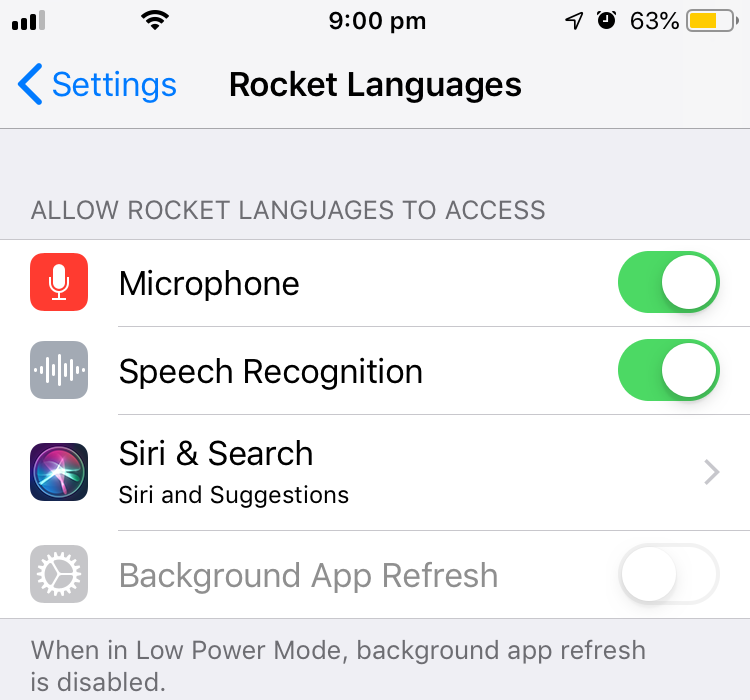Rocket Languages offers a number of different languages, however I am focusing on Chinese for this review. Overall I rank rocket Languages as one of the better Chinese learning resources, although it has some short comings. The price is similar to other Chinese learning solutions.

Table of Contents
Pros and Cons
Pros
- Step by step lessons aimed at three different difficulty levels (Beginners, Intermediate and Advanced)
- The App allows you to learn on the go, although you will get some strange looks from other commuters on the train when you are practicing.
- Ability to purchase just the level you need
- Free trial is available
- Pay once for lifetime access
- Each of the three levels has approximately 30 interactive audio lessons, 30 writing and 30 language & culture lessons, giving you a total of more than 100 hours of lessons time and nearly 2000 phrases per level.
Cons
- The review sessions give you the English word and pause for you to respond in Chinese, however they do not offer the reverse which would be very helpful for building Chinese comprehension and the ability to think on your feet.
- As with all audio programs, while audio lessons are good to bring you up from a novice to early intermediate level, more exposure outside the materials is required to move to an advanced level.
- You will need a separate resource for learning to write, or just learn to write the old fashioned way – daily practice with pen and paper.
- The Apps speech recognition on the iPhone isn’t great.
- It doesn’t appear new content is added to the courses, however this isn’t unreasonable given the cost is one off.
Available difficulty levels
There are three levels in Rocket Chinese, known as Level 1,2 and 3. These levels are essentially beginner, intermediate and advanced. Each level is designed to take your Chinese from that level to the next, so if you start at level 1 and complete that level, you should now be at intermediate level. Level 3 is described as allowing you to achieve an advanced conversational level.
From the dashboard you can select from the follow lesson types:
- Interactive Audio Lessons
- Language & Culture Lessons
- Writing Lessons
- Survival Kit Lessons
With the exception of Survival Kit Lessons, each of the available lesson types above are broken down in to to approximately eight modules of four lessons each. The intention is that you should work through these modules in order, so for example at the Beginners Level under Interactive Audio Lesson, Module 4 you will find:
- Booking a Table
- Restaurant
- Paying the Bill
- Dancing
Unlike some language courses which force you to complete each level before unlocking the next, there is nothing stopping you skipping directly to a module that interests you. This is great if you need to skip around to find a starting point appropriate to your existing skill level.
I’ll go through the lesson types one by one to give you and idea of what you get
Interactive Audio Lesson Review
The interact follows a familiar format for those of you who have tried podcasts or audio lessons before. The composition of each lesson is:
- Full lesson audio (20 minutes), which is a full lesson in English which includes a Chinese dialogue and full explanation of the dialogue
- Lesson audio (less than a minute), just the Chinese dialogue for convenient review.
- Review audio (2-3 minutes), a vocabulary review, which states words or phrases in English and pauses for you to answer. This is good, however I feel that the reverse is also very important, that is, the audio saying the word in Chinese and pausing for you to answer in English. Understanding Chinese is a major hurdle for new learners, thus getting used to listening in Chinese is very important.
If you are a complete beginner, the first thing you will notice is that the lesson dive straight in to using Mandarin, with the lesson introduction in Chinese. Although daunting for a beginner who is unfamiliar with Chinese, this is a good thing as you need to get used to immersing yourself in the language.
Following a well tested approach to audio lessons, there are two hosts, one a native Chinese speaker (Lin) and the other a native English speaker (Dave). The hosts of the lesson are energetic and clearly spoken. New words are spoken several times at normal speed and then spoken slowly, after which they pause for you to say the word. Note that they do emphasise the need to speak out loud and not just listen along; ensuring you verbalise words is very good advice for any learner of any language.
Conversation Practice
Rocket Languages offers a feature called Conversation Practice. This allows you to listen to each part of the dialogue and record and play back your response.
An extension of this feature is to take the Play of one of the characters. In this mode you record yourself saying the dialogue of your character and just listen to the pre-recorded character. In this mode you are stepped through the conversation automatically, so it’s not a case of play-record-listen as the standard conversation mode.
Voice recognition

If you have Chrome or the App, voice recognition is used, if not this feature only records your response for playback, but does not in any way check it for accuracy. When I tried recognition on one of my computer it kept failing, however it worked on my iPhone. Of interest however is that the built in iPhone speech recognition, so this isn’t a Rocket Languages proprietary solution:

By using the built in speech recognition the App appears to be limited to comparing the chinese text output of the voice recognition the iPhone provides against the word you are trying to say. The result of this leads to some strange grading results. A few examples are below:
- Saying complete the wrong word still gives a 10% accuracy result
- Saying the wrong tone is marked completely incorrect due to the voice recognition returning a completely different character e.g. saying yè instead of yě, when in fact it should just be a minor tone error.
- Mispronouncing the tone of a word is still recognised by the iPhone language recognition and is therefore given a correct result. e.g. instead of pronouncing 欢迎 as Huānyíng, I pronounced the second character with a falling tone, that is as “Huānyìng”, but was still recognised as 欢迎 and therefore marked as correct.
Language and Culture Lessons

The Language and culture lessons can be quite broad in content, but serve as supporting material for the Interactive Audio Lessons. Examples of the culture lessons include tones, more discussion about topics in support of the audio lessons such as talking about telephone numbers or catching a taxi.
These lessons can be quite details and introduce new vocabulary and grammar details with pre-recorded audio and the previously discussed voice recognition feature. I feel that the language and culture lessons are in fact a main strength of Rocket Languages due to the detail they provide. This level of detail is not so common with other audio based language learning tools. A word of caution here, if you are not motivated by reading and want something very hands on you may not find the Language and Culture Lessons as valuable as I did.
Writing Lesson

The Writing Lessons start off with introducing the basics of Chinese characters such as step by step stroke order, the evolution of characters from ancient pictographs (pictures) to modern characters. The lessons also include the pre-recorded pronunciation of characters, with voice recording and recognition as well as video of someone writing the characters.
This is really nitpicking given the target audience, however there are shortcomings in the material. Specifically in the early lessons the 女 “nǚ” and 男 “nán” characters, meaning woman and man respectively, lacked some accuracy in the way the characters were written in the video, which makes me feel some of the content was perhaps rushed or not checked. I don’t think this would matter to most learners and quite frankly I can do do make similar mistakes myself, however for a language course I felt they should avoid such errors when teaching how to write characters.
Rocket Language subscription cost and options
The subscription model allows you to subscribe Level 1 (Beginners), Level 1 & 2 (Beginners and Intermediate) or Level 1,2 & 3 (Beginners, Intermediate and Advanced). There is the option to buy just Level 2 or 3, however these are not as heavily discounted as buying one of the bundles. Also note that if you’re already at an advanced beginner or intermediate level, there is no bundle for Level 2&3 only.
As at the time of writing the cost of the purchase options are below. I have also quoted the discounted price that is currently offered when you sign up for a free trial.
| Level | Normal Price | Discounted Price |
| 1 | $149.95 | $89.95 |
| 2 | $299.90 | $239.90 |
| 3 | $449.95 | $249.90 |
| 1&2 | $149.95 | Not available |
| 1,2&3 | $149.95 | Not available |
Trial Membership
Rocket Chinese offers a trial membership for each language they support. The trial is limited to the first one or two lessons in the first module of each level; the trial includes access to the lessons in “Interactive Audio Lessons”, “Language & Culture Lessons” and Writing Lessons”, but not “Survival Kit Lessons”. The trial is therefore enough to get some idea of how Rocket Chinese words, but does not seem to offer sample lessons from more difficult modules with a level.
Conclusion
Overall I’m quite impressed with Rocket Languages Chinese. If I was learning a language for the first time Rocket Languages would certainly be one I would seriously consider. If you have already started your Chinese language journey there doesn’t appear to be discount packages available, however the single level pricing is not out of reach if you consider the amount of content you get.
I’ve yet to find a Chinese speech recognition system I consider acceptable. I think part of the difficulty is that speed recognition for a single Chinese character is difficult given that many individual characters share the same pronunciation. If you want to practice speaking Chinese I suggest a combination of talking to yourself, perhaps alone so people don’t think you’re crazy, and interacting with native Chinese speakers.

